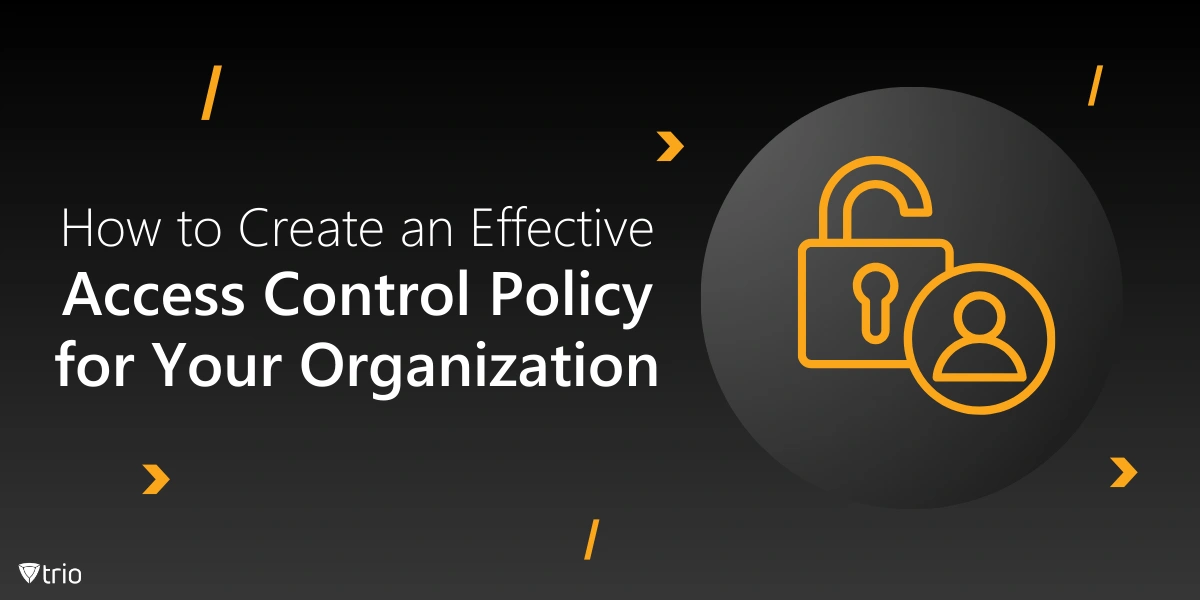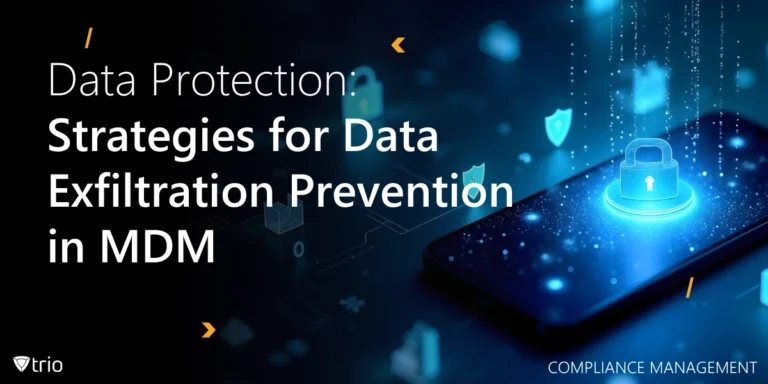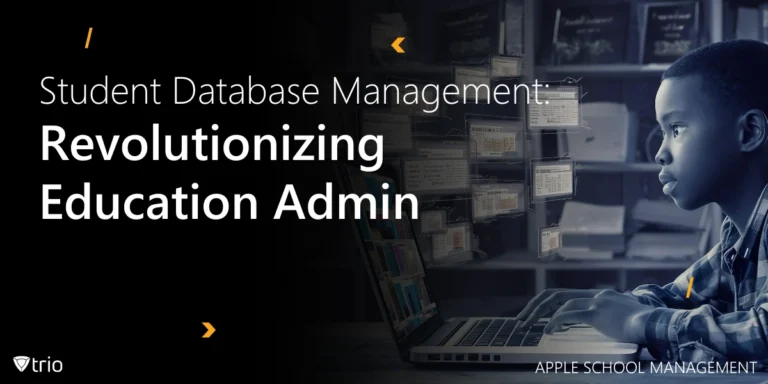Access control is a critical component of any organization’s security strategy. According to EntryCare, “By 2029, the market is expected to reach $15.2 billion, growing at a CAGR of 7.8% during the forecast period.” Proper access control ensures that only authorized individuals have access to specific resources, thereby protecting sensitive information from unauthorized access or data breaches. An Access Control Policy serves as a blueprint for managing access to systems, applications, and data within your organization. In this blog, we will explore the essential elements of an Access Control Policy and provide guidance on creating an effective Access Control Policy Template.
Why a Network Access Policy is Important
An Access Control Policy is a cornerstone of organizational security, playing a crucial role in safeguarding sensitive data, systems, and resources from unauthorized access. Here’s a deeper look into why having a well-defined Access Control Policy is essential:
-
Protects Sensitive Data
An Access Control Policy helps protect sensitive data, including personal information, financial records, and intellectual property, by ensuring that only authorized users can access specific resources. Unauthorized access to these assets can lead to data breaches, financial loss, and damage to an organization’s reputation. By implementing a structured policy, organizations can enforce strict access controls that minimize the risk of exposure to sensitive information.
-
Mitigates Security Risks
Without clear access control measures, organizations are vulnerable to a wide range of security threats, including insider threats, hacking attempts, and unauthorized data manipulation. An Access Control Policy helps mitigate these risks by defining who can access specific resources, under what conditions, and for what purposes. This reduces the likelihood of unauthorized users exploiting system vulnerabilities or misusing data.
-
Ensures Compliance with Regulatory Standards
Many industries are subject to strict regulatory requirements regarding data privacy and security, such as GDPR, HIPAA, and SOX. An Access Control Policy ensures that an organization complies with these standards by enforcing appropriate access controls. Regular audits and access reviews, mandated by the policy, provide documentation that can be used to demonstrate compliance during regulatory inspections or audits, helping avoid costly fines and legal consequences.
-
Establishes Accountability and Transparency
A comprehensive Access Control Policy establishes clear roles and responsibilities for managing access, ensuring that every access request is documented, reviewed, and approved according to established guidelines. This creates a transparent system where it is easy to trace who accessed what, when, and why. This level of accountability helps detect unauthorized actions and provides a clear trail for investigating suspicious activities.
-
Facilitates Smooth Onboarding and Offboarding
Onboarding new employees and offboarding departing ones can be complex processes involving multiple access rights and permissions. An Access Control Policy simplifies these processes by providing clear guidelines on granting and revoking access, ensuring that new employees have the access they need to start their roles promptly and that former employees lose access immediately upon departure. This reduces the risk of unauthorized access lingering after someone leaves the organization.
-
Prevents Unauthorized Modifications and Insider Threats
Not all threats come from outside; insider threats pose significant risks, especially when employees have more access than necessary. An Access Control Policy enforces the principle of least privilege, granting users only the permissions required for their job. This reduces the chances of accidental or intentional unauthorized modifications to critical systems and data, safeguarding against internal misuse.
What to Include in an Access Control Policy Template
If you want to create an access control policy sample template, here are the main parts you need to include:
-
Roles and Responsibilities
An effective Access Control Policy starts by clearly defining the roles and responsibilities of those involved in the access management process. This includes identifying the policy owner, access control administrators, and end-users. Clearly defined roles help ensure accountability and provide a clear point of contact for access-related questions or issues.
-
Access Control Principles
Access control principles such as Least Privilege, Need-to-Know, and Role-Based Access Control (RBAC) are fundamental to any access control policy. These principles help minimize security risks by ensuring that users have only the access necessary to perform their job functions. Implementing these principles helps prevent accidental or intentional misuse of sensitive information.
-
User Roles and Permissions
Defining user roles and associated permissions is key to managing access effectively. This section should outline different roles within the organization, such as Administrator, Read-Only User, and Read-Write User, and specify the access levels associated with each role. By categorizing access based on roles, the policy simplifies the process of assigning permissions and reduces the likelihood of granting excessive access.
-
Access Request Procedures
A clear process for requesting access ensures that new access rights are granted in a controlled and documented manner. This section should describe the steps for submitting access requests, the required information, and the approval workflow. Having a standardized process helps maintain consistency and ensures that all access requests are properly reviewed and approved before access is granted.
-
Access Review and Auditing
Regular access reviews and audits are essential for maintaining the integrity of access controls. Access reviews involve checking whether users still require the access they have been granted, while auditing tracks who accessed what and when. This ongoing oversight helps detect any unauthorized access or misuse and allows the organization to take corrective action promptly.
-
Access Revocation
Access revocation is a crucial component of any access control policy. This section should outline the process for revoking access when it is no longer needed, such as when an employee leaves the company or changes roles. Timely access revocation prevents former employees or unauthorized individuals from accessing sensitive resources after their departure.
-
Incident Response
In the event of unauthorized access or a security incident, the Access Control Policy should provide guidance on how to respond. This includes instructions on reporting incidents, investigating the cause, and taking corrective actions to prevent future occurrences. A well-defined incident response process helps minimize the impact of security breaches and reinforces the importance of maintaining secure access controls.
Implementing Your Access Control Policy
To ensure that your Access Control Policy is effective, it is important to:
- Communicate the Policy: Ensure that all employees, contractors, and third parties are aware of the policy and understand their responsibilities.
- Regularly Review and Update the Policy: Access control needs can change as the organization evolves. Regularly reviewing the policy ensures it remains relevant and effective.
- Leverage Technology: Use tools and software that automate access management, monitoring, and auditing processes to enhance security and efficiency.
Free Access Control Policy Template
An Access Control Policy is a critical tool for protecting your organization’s resources and data. By clearly defining access control principles, roles, procedures, and compliance measures, you can effectively manage who has access to what, minimizing the risk of unauthorized access. Use the Access Control Policy Template provided to create a tailored policy that fits your organization’s needs and strengthens your overall security posture.
See Trio in Action: Get Your Free Trial Now!
For more robust security solutions, consider our Mobile Device Management solution, Trio, and its advanced access control and identity management tools. Sign up for a free trial today to see how Trio can help streamline access control and enhance security across your organization.
Get Ahead of the Curve
Every organization today needs a solution to automate time-consuming tasks and strengthen security.
Without the right tools, manual processes drain resources and leave gaps in protection. Trio MDM is designed to solve this problem, automating key tasks, boosting security, and ensuring compliance with ease.
Don't let inefficiencies hold you back. Learn how Trio MDM can revolutionize your IT operations or request a free trial today!




